From the rack, Iron Maiden, and breaking wheel, to the impalement sticks and more, medieval torture devices were instruments used during the Middle Ages to inflict pain and punishment on individuals, often as a means of interrogation, punishment, or public execution.
These devices were designed to cause immense suffering, both physically and psychologically, and were some of the most terrifying and gruesome in history.
Table of Contents
The Breaking Wheel
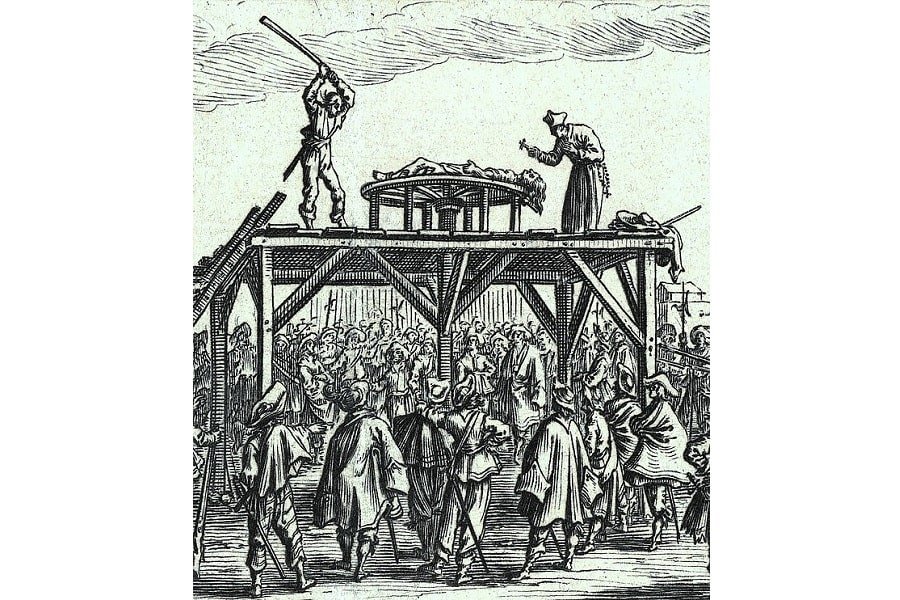
Perhaps one of the most famous in line of medieval torture devices is the Breaking Wheel, sometimes called the Execution Wheel or the Wheel of Catherine. It is best known for a reason since this torture and punishment method was considered one of the most brutal and agonizing ones.
The device was a large wooden wheel, big enough to fit even the tallest offenders. Some extras such as hard iron parts and spikes were added to make the medieval torture devices even more painful.
So, how did the breaking wheel work? The process was actually like a sick play with different acts. Act one involved the hammering of the victim’s limbs with a hammer. Of course, this caused severe injuries. The sharp spikes were placed directly under the limbs to make the pain more severe.
The idea of the first act was, however, not to kill the victim. It merely aimed to punish offenders and let them feel the consequences of the crimes that they committed. The bone fractures that were caused in the first act were very specific and identifiable. Only in act two, the offenders would be faced with death.
In the second act, they’d either tie the victim’s body to another cartwheel or hoist it up on a pole or mast. At this point, the torturers had some choices to make. They could either chop off the person’s head or light a fire under the wheel, slowly burning them down.
After all the torture was over, they’d leave the body to rot and be scavenged for days. Medieval Westerners thought death caused by the breaking wheel was some sacred act that hindered the journey from death to resurrection.
Therefore, the breaking wheel not only aimed to torture its victims while alive, but it also aimed to torture victims in a spiritual way after death.
Impalement Sticks

Next in the line of medieval torture devices is a large wooden stick or pole used for impalement. Impalement was used on a large scale by the former emperor of Wallachia by the name of Vlad the Impaler. Impaling is basically a really brutal way of torturing people – and eventually executing – by shoving a pole right through the victim’s body.
READ MORE: How Did Vlad the Impaler Die: Potential Murderers and Conspiracy Theories
They usually reserved this punishment for ‘crimes against the state’ and it was considered one of the worst ways to go out. You might think it would be a quick death, but nothing is further from the truth. If it’s done properly, the victim could actually survive for several days. The trick was to avoid all the vital organs when shoving the pole through the victim.
Having the right pole was crucial in doing so. The specific type of pole or wooden stake was used for impalement depending on the time period and region.
The person to be executed would be forced to sit or be tied to the stake, which would then be inserted through the anus or another part of the body. The stake would often be sharpened to make insertion easier.
Other cultures preferred metal poles or spears. These poles could be either sharpened or have a blunt tip. The person would be impaled by falling onto the pole from a height, or by being forced onto it.
In certain cases, impalement involved the use of multiple stakes or poles. The person would be tied or restrained between two or more stakes that would be driven through the body simultaneously.
The whole impalement thing goes way back and was already used as one of the torture methods in ancient Babylon. They had it in their Code of Hammurabi, which was written in 1772 BCE.
In Babylon, impalement was mainly used for women who killed their husbands. However, later on, it would be used with more political motives.
However, Vlad the Impaler was the one that brought impalement to the medieval world. During the medieval era, he impaled over 20,000 people. There were literally whole fields full of people that were impaled by the emperor of Wallachia.
Cage for Rat Torture
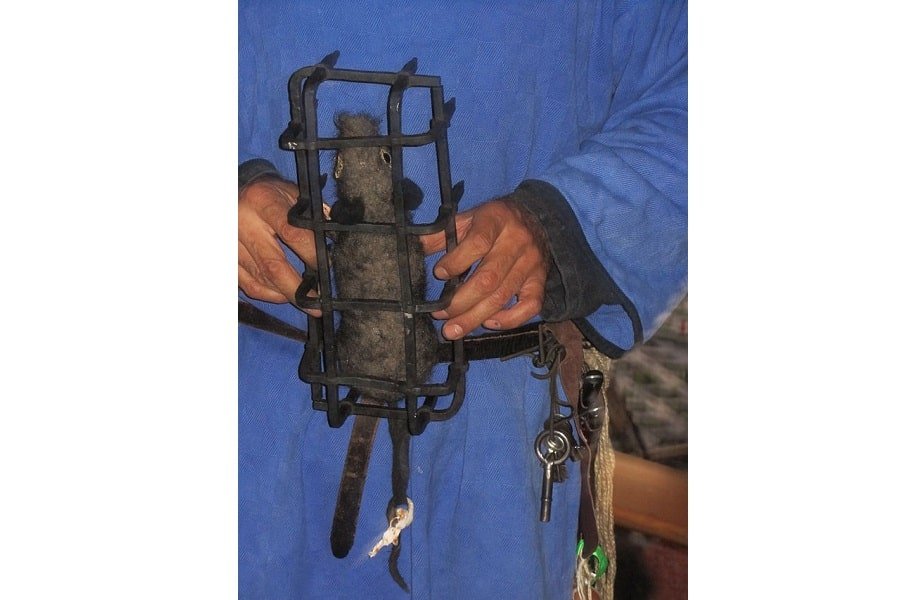
One of the most sinister torture techniques emerged during the Dutch Revolt at the end of the middle ages. The device in use was a simple and bottomless cage, where rats would be placed. Afterward, the cage was positioned on the victim’s belly. By placing a small tray with burning coals on top of the cage, the metal structure would heat up quickly.
Naturally, the rats wanted to flee the heat but had nowhere to go; the cage trapped them. Therefore, they would begin to bite through the only soft surface they could find — the victim’s body. Using their sharp claws and teeth, the rats would quickly gnaw their way into the victim’s bowels, inflicting excruciating pain and terror.
According to historical accounts, one of the earliest usages of this medieval torture device was during the Dutch Revolt, where Dutch leader Diederik Sonoy became notorious for implementing this form of torture against captured prisoners.
The simple device and method that accompanied it proved particularly effective when Dutch leaders wanted to extract information from their Spanish enemies. Often, the mere presence of the caged rats on prisoners’ bellies would compel the terrified individuals to spill any information they possessed, even before the addition of burning coals.
Because of the successful results, other leaders across the globe recognized the efficiency of rat torture for both interrogation and punishment purposes. So, they adopted their own variations of the technique. Astonishingly, these brutal methods persisted well into the 20th century in certain South American countries.
Dunking Stool
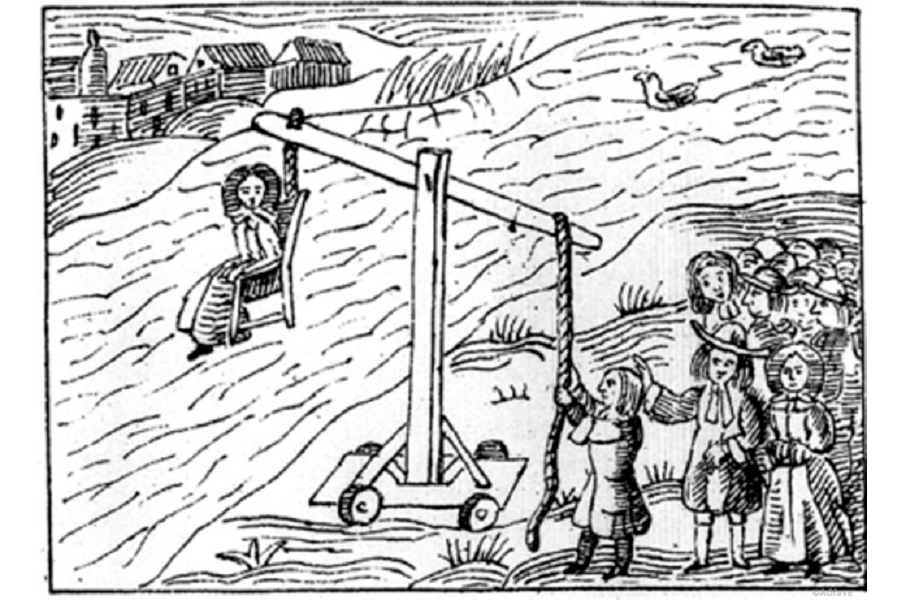
As you might know, people living in the medieval period were quite scared of witches; to the point where they thought they popped up everywhere in their own society. Between the years 1500 and 1660, up to 80,000 suspected witches were put to death in Europe. It both had to do with religious beliefs and an overall fear that was instilled in society.
Around 80 percent of the witches were women, who were accused of talking to the Devil because of their extraordinary expressions of lust. Dunking was one of the main mechanisms that were used to torture the victim alive.
The practice of ‘dunking’ involved the use of a chair or a stool attached to a long pole or beam that could be swung horizontally or vertically. The accused witch would be strapped or tied to the chair and then submerged or partially submerged in water, often a pond or a river.
READ MORE: Who Invented Water? History of the Water Molecule
On the one hand, if they didn’t confess, they’d be downed into the water until the victim lost consciousness and potentially died. On the other hand, if the victim confessed to witchcraft, they were thrown into the river anyway with stones tied around their body. So death was the most probable outcome, and only a few would survive this form of medieval torture.
It wasn’t just witches who were dunked into the water, however. Even thieves and murderers could face this punishment if they wouldn’t confess.
Pillory
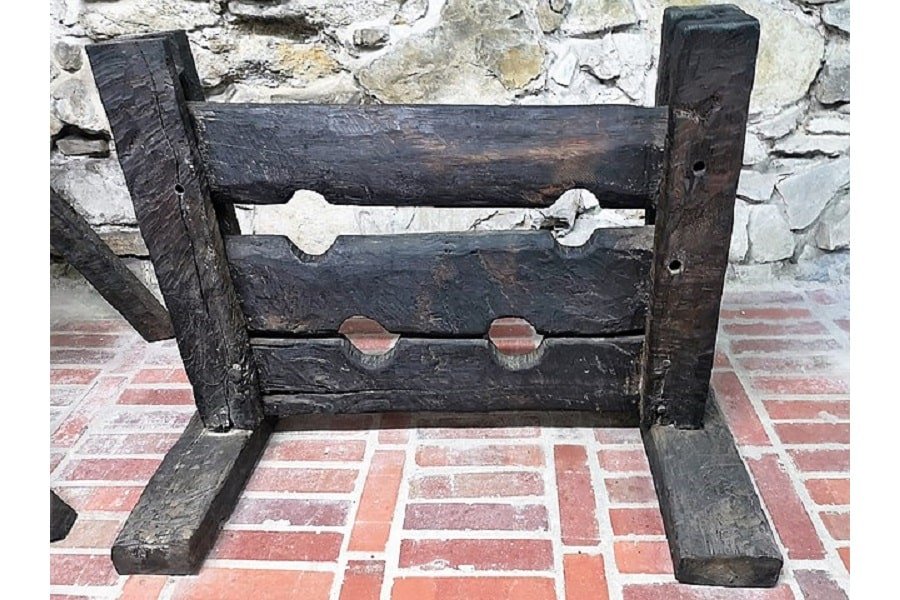
The pillory is potentially the most recognizable device on this list. This torture device was a form of public humiliation and punishment, widely used throughout Europe. It consisted of a wooden framework with holes for the head and hands, where the offender would be confined and displayed to the public.
The pillory served as a means to humiliate, shame, and physically punish individuals that were found guilty of various crimes. The device gained prominence in medieval Europe as a method of punishment. While there is no definitive inventor of the pillory, it is known that it was employed by both civil authorities and the Church.
The pillory was primarily used to punish individuals convicted of offenses such as theft, fraud, perjury, public drunkenness, blasphemy, and other acts that were quite minor if you compare them to murder or high treason.
Offenders would be placed in the pillory with their heads and hands secured in the holes, leaving them exposed and vulnerable. The public would gather around, jeering, taunting, and even physically abusing the individual in the pillory by throwing objects.
The punishments that were executed with the pillory were quite diverse. They could be subjected to verbal and physical assaults, including throwing stones, rotten vegetables, excrement, or dead animals. In some cases, the pillory was designed with additional mechanisms such as pincers or spiked collars to further inflict pain and injury.
The duration of the punishment also varied, ranging from a few hours to several days, depending on the severity of the crime committed. The pillory served as a form of public spectacle and a deterrent against crime.
It was not just humiliating, however. It was a brutal and dehumanizing practice, often resulting in severe physical and psychological harm. Over time, societal attitudes towards punishment shifted, and the use of the pillory diminished.
The Iron Maiden

Not to be mixed with the band, the Iron Maiden is a notorious torture device that has garnered considerable attention and fascination throughout history. The Iron Maiden is one of the medieval torture devices on this list that actually originated from the middle ages.
It is often depicted as an iron coffin adorned with metal spikes on the interior. While the Iron Maiden has captured the popular imagination as a symbol of medieval cruelty, it remains a bit uncertain whether the torture device actually existed and was widely used. There is simply doubt whether the sources referring to the Iron Maiden are legitimate.
That mainly has to do with the fact that the earliest references to the Iron Maiden only come from sources that date back to the 18th and 19th centuries. Because they’re only mentioned relatively late, people suggest that it might have been a fabrication or exaggeration to portray the past as more brutal and savage.
Nevertheless, despite its dubious historical authenticity, the Iron Maiden has become entrenched in popular culture and has been displayed prominently in TV dramas, literature, and art as a symbol of medieval sadism.
Pear of Anguish

The Pear of Anguish, also known as the choke pear or mouth pear, is a pear-shaped device that emerged at the end of the middle ages and early modern period.
This choke pear basically had a metal body that was divided into spoon-like segments. These segments could be expanded by using a spring mechanism or a key. The use of the Pear of Anguish focused on inflicting pain, gagging, or simply mutilating the victim in any way possible.
The usage of the pear depended on the specific crime that was committed by the offender. You had either a choke pear, which was an oral device inserted into the victim’s mouth, or anal and vaginal pears – which need no further explanation. Once inserted, the pear gradually expanded.
The pain would’ve been incredible, and the device had a high potential to result in severe internal damage. Its pronged structure allowed it to tear into delicate tissues such as the throat, cervix, or intestines, leading to agonizing injuries and, in many cases, death.
Historical accounts indicate that this medieval torture device was commonly employed on individuals accused of witchcraft, homosexuality, or heresy. Its use served to enforce social and religious norms, instill fear, and extract confessions.
Brazen Bull

The Brazen Bull, also known as the Sicilian Bull, is a gruesome torture device that originated in ancient Greece. It was basically a hollow brass statue that resembled a bull, designed for burning people.
The condemned person would be placed inside the bull, and a fire would be set underneath it, slowly heating the metal. As the temperature rose, the metal became scorching hot, causing the person inside to endure intense heat and pain whilst being slowly burned.
The bull’s construction was ingenious and amplified the cries and screams of the victim; the metal walls of the bull acted as a resonating chamber, converting the desperate pleas for mercy into haunting, bull-like sounds.
The intention behind the Brazen Bull was both physical and psychological. The victim would witness their impending doom as they were slowly roasted alive, while the agonizing screams would be transformed into haunting vibrations.
The psychological impact on both the victim and witnesses was immense, even instilling fear in the ones that were just watching the spectacle. In practice, this also led to a higher degree of obedience in the onlookers. For if you failed to obey, there was a potential that you’d end up inside the fiery bull.
The use of the Brazen Bull was not limited to a particular group or time period. It found its way into various civilizations and historical periods, serving as a symbol of cruelty and inhumanity.
Thumb Screw
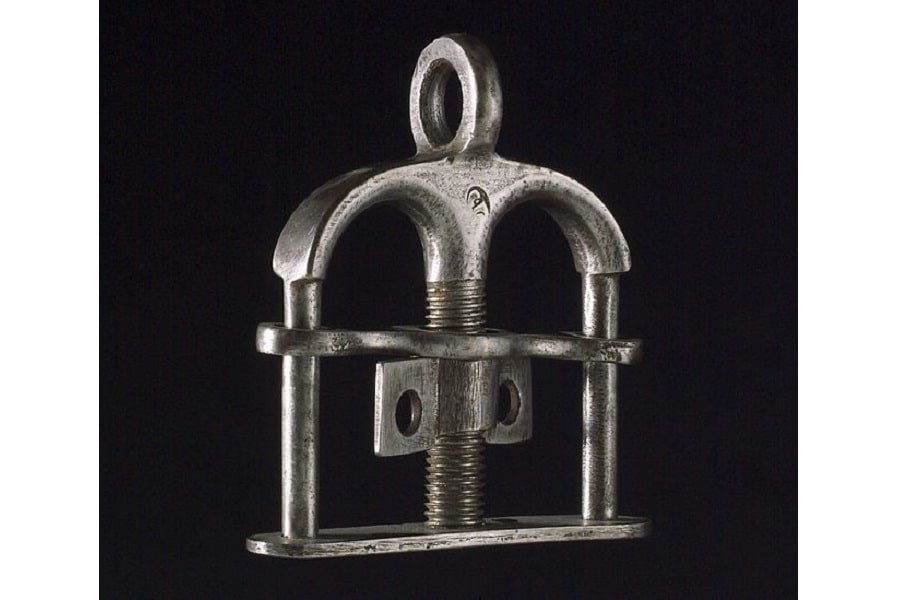
The thumb screw is another form of medieval torture that has a long and dark history, particularly during the medieval period. While the other medieval torture devices on this list have a high probability of leading to death, the thumb screw wasn’t very deadly. It was focused on the victim’s bones and the victim’s hand, or their mutilation.
This thumb screw consists of a metal vice-like mechanism with two flat surfaces and a screw in the center. The victim’s thumb would be placed between the surfaces, and as the screw was turned, the plates would tighten, putting the desired amount of pressure on the thumb.
The gradual tightening caused immense pain as the pressure increased. Often, this led to the breaking or crushing of bones and caused severe tissue damage. The severity of the torment could be adjusted by turning the screw, making it a versatile tool for varying degrees of suffering.
The thumb screw was seldom used on its own and often in combination with other methods of torture. While the physical suffering was, of course, not desired by the victim, the psychological trauma that was caused by the potential of increasing pain was also a big factor in the torture.
The Rack
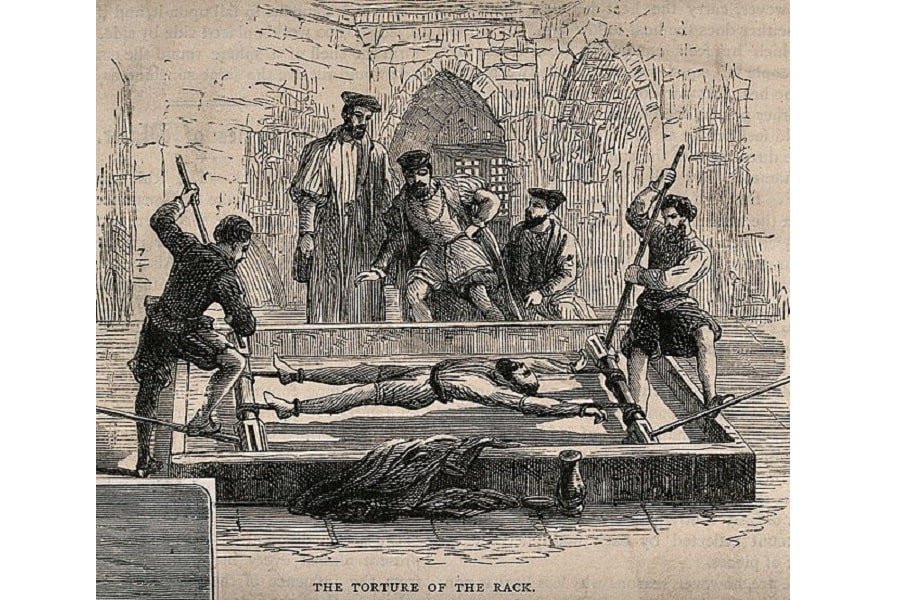
Torture by the Rack, an infamous torture device dating back to medieval times, is one of the most painful torture methods. This torture device pulled the limbs on a stretching table.
The rack consisted of a wooden frame with a roller at each end. The victim’s ankles and wrists were bound to these rollers with ropes, and as the torturer turned the handle, the ropes attached to the rollers would be pulled. This resulted in the victim’s limbs being slowly separated in opposite directions.
This relentless stretching caused immense pain and often resulted in dislocated joints, torn ligaments, and the snapping of bones. The torturer had control over the degree of stretching, allowing them to gradually increase the tension, pushing the victim to their limits.
The rack was not only used as a tool of punishment and ripping off people’s limbs. Actually, skilled torturers were able to make the victim confess their crimes rather quickly because they installed an increasing fear of the upcoming stretching of the limbs.
Throughout history, the rack was employed in various regions and during different periods of time. Its use was not confined to specific groups or societies but rather transcended cultural boundaries, leaving behind a legacy of suffering and anguish. The rack is certainly one of the most gruesome instruments of torture that have existed in medieval times.
Judas Cradle
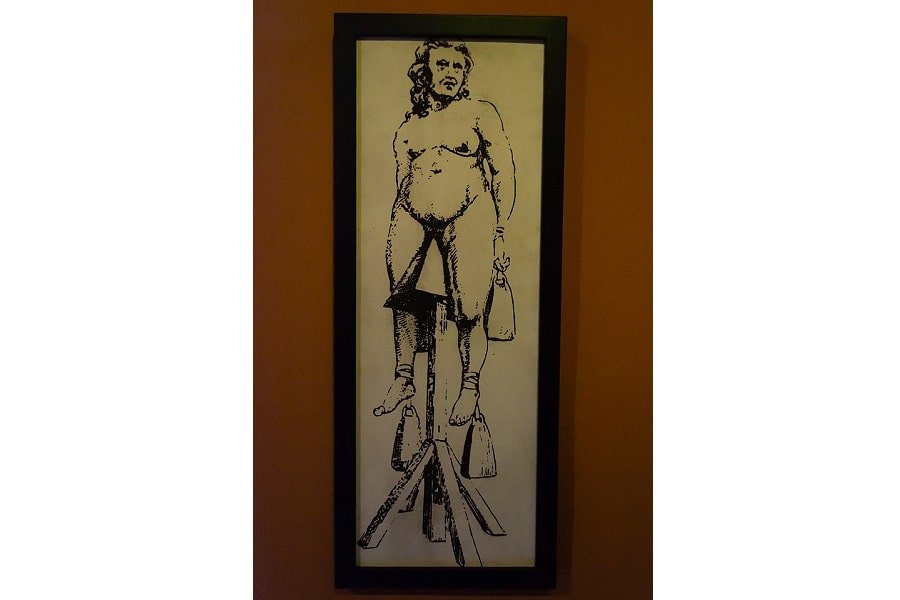
Also known as the Judas Chair, the Judas Cradle was primarily used by the Spanish Inquisition and other judicial systems of that time. This torture tool consisted of a pyramid-shaped seat with a pointed tip.
The victim would be placed on top of the seat, usually with their legs bound, and gradually lowered onto the sharp point. The Judas Cradle was a tool of punishment and coercion, with a high probability of inflicting internal injuries. Its use aimed to extract confessions or punish individuals that were deemed guilty of crimes or heresy.
The Knee Splitter
The knee splitter is another terrible medieval torture device. Designed to immobilize the victim, it consisted of two spiked wood blocks or sharp blades attached to a hinged mechanism.
The victim’s knees were forced onto the device and, upon activation, the spikes or blades would penetrate deeply into the flesh and bone – causing severe injuries. The knees of the victim were simply split, leaving the offender in intense agony.
The knee splitter was utilized as a means of punishment, interrogation, or simply to instill fear and control.
The Scavenger’s Daughter

The Scavenger’s Daughter, also known as Skevington’s Daughter, was a medieval torture device that was primarily used in England during the reign of King Henry VIII. It was invented by Sir Leonard Skevington, an English knight.
READ MORE: How Did Henry VIII Die? The Injury That Costs a Life
The device made sure that the victim was completely restrained. It consisted of an iron hoop, rods, or screws. The victim would be forced to kneel with their head and limbs bent forward, while the hoop was tightened around their body, applying intense pressure.
This torture device was primarily used to punish individuals suspected of high treason, heresy, or other crimes against the state or the Church. Those accused of plotting against the crown, engaging in political dissent, or holding ‘erroneous’ religious beliefs were subjected to the Scavenger’s Daughter.
The device’s purpose was to compress the victim’s body which, in turn, caused severe pain and could lead to broken bones. The compression of the hoop restricted the blood flow and put immense pressure on the internal organs.
The torture was often combined with other methods of torment, such as beatings or psychological abuse, to extract confessions or force individuals to renounce their beliefs.
The Breast Ripper
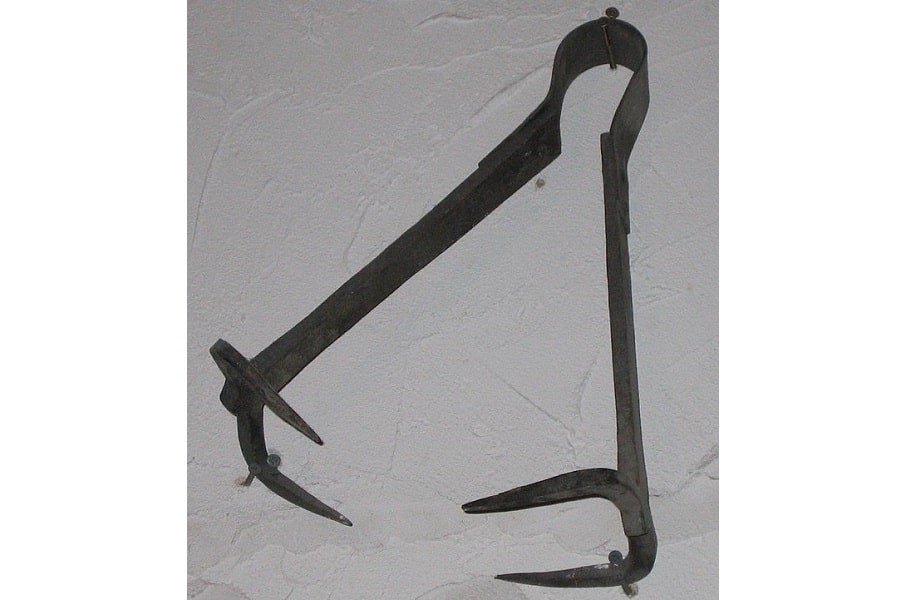
The breast ripper, also known as the iron spider or the spider’s web, consisted of a metal tool with four or more sharp, claw-like hooks, arranged in a circular or semicircular pattern. This device was specifically created to cause mutilation of the breasts of women.
The breast ripper was exclusively applied to women who were accused of various crimes. The most common ones were related to adultery, witchcraft, or heresy. The victim’s breasts would be clamped tightly with the hooks, and then the device was forcefully pulled away, tearing and mutilating the flesh.
The use of the breast ripper was not limited to legal proceedings, as it was also employed during interrogations to extract confessions. The physical and psychological trauma inflicted by this device left lifelong scars, both physical and emotional, on its victims.
Spanish Donkey
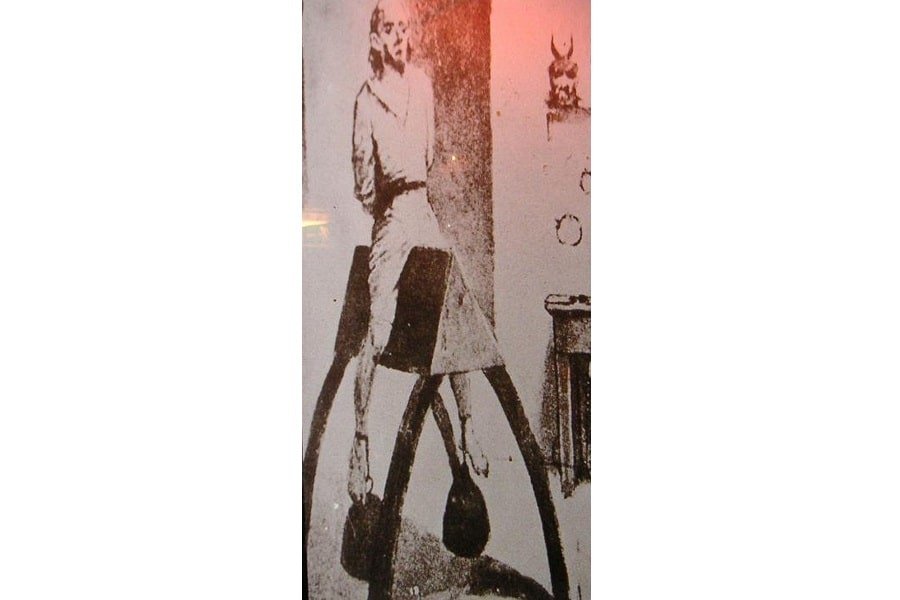
Last in the line of medieval torture devices is the Spanish Donkey – also known as the wooden horse or wooden pony. It is yet another gruesome device commonly used by the Spanish Inquisition.
This device consisted of a triangular-shaped wooden plank or ‘saddle’. The wood was often adorned with spikes or sharp edges. The victim – who was often stripped naked – had to sit on the exact edge of the device. In that sense, it sort of resembled the Judas Cradle. However, there was a definite difference.
With the Spanish Donkey, the torturer would apply additional weights to the victim’s feet or tie them to the device, increasing the pressure and causing excruciating pain. This sadistic method aimed to inflict intense suffering, often resulting in severe injuries or death.